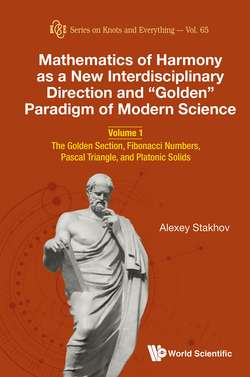Читать книгу Mathematics of Harmony as a New Interdisciplinary Direction and “Golden” Paradigm of Modern Science - Alexey Stakhov - Страница 26
На сайте Литреса книга снята с продажи.
1.2.2. The second form of the task of the division of segment in the extreme and mean ratio
ОглавлениеThe second form follows from the first form, given by (1.1), if we will make the following transformations. Dividing both sides of the expression (1.1) first by a, and then by b, we obtain the following proportion:
Fig. 1.5. Division of a segment in extreme and mean ratio (the golden section).
The proportion (1.2) has the following geometric interpretation (Fig. 1.5). We divide the segment AB by the point C for the two inequal segments AC and CB in such a manner that the bigger segment CB so refers to the smaller segment AC, as how the whole segment AB refers to the bigger segment CB, that is,
This is the definition of the “golden section”, which is used in modern science.
We denote the proportion (1.3) by x. Then, taking into consideration that AB = AC + CB, the proportion (1.3) can be written in the following form:
from which the following algebraic equation for calculating the desired ratio x follows:
It follows from the “physical meaning” of the proportion (1.3) that the desired solution of the equation (1.4) must be a positive number, from which it follows that the solution of task of “dividing a segment in extreme and mean ratio” [32] is the positive root of equation (1.4), which we denote by Φ:
Fig. 1.6. Phidias (490–430 BC).
This is the famous irrational number that has many delightful names: golden section, golden number, golden proportion, divine proportion.
The algebraic equation (1.4) is often called the equation of the golden proportion.
Note that on the segment AB, there is one more point D (Fig. 1.6), which divides AB in the golden section, because
